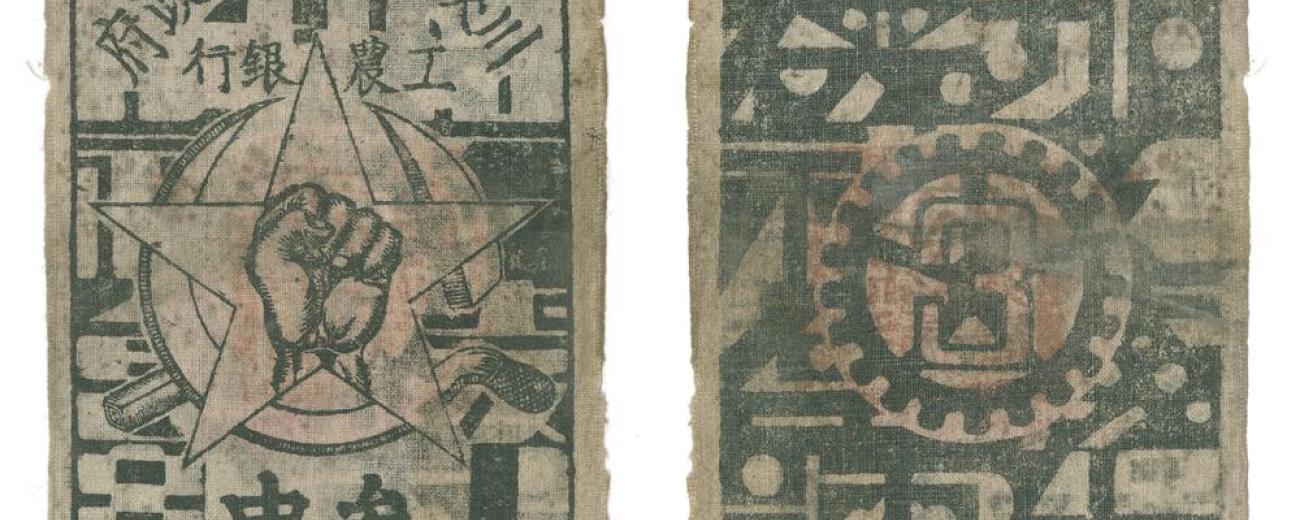
The cloth banknote of the Sichuan-Shaanxi Soviet Government Workers’ and Peasants’ Bank

Key information
- Date
- Time
-
5:00 pm to 7:00 pm
- Venue
- Main Building, SOAS
- Room
- RB01
- Event type
- Seminar
About this event
In China, during the turbulent decade of the 1930s, a number of Chinese soviet areas (also known as revolutionary base areas) were formed as a direct reaction to the violent government crackdown on membership of left-wing organisations that had taken place since the late 1920s.
The most extensive of the soviet areas, where large numbers of communists made their homes, was the Jiangxi Soviet, established by Mao Zedong in 1931. In one lesser-known soviet area, the Sichuan-Shaanxi Soviet, the regional government decided to use cloth as an alternative to paper to print their banknotes. This cloth banknote was distributed by the Sichuan-Shaanxi Soviet Government Workers and Farmers Bank in 1933.
The banknote displays many of the common symbols associated with the worldwide socialist movement: the hammer and sickle, the clenched fist, and Marxist rallying cry, “Workers of the World, Unite”, translated into Chinese. Examples can be seen in museum collections worldwide, including, in the UK, in those of both the Ashmolean and British Museums.
The reverse of the cloth banknote shows a design that features a number of large stylised Chinese characters that, on close examination, can be recognised as Constructivist design associated with modern “Art Deco” design in China, which ultimately had their origins in the USSR and arrived in China, via Japan in the 1920s. It is this aspect of Soviet Russian art and design, adopted by the creators of the cloth banknote in this remote area of China in 1933, that makes it so important in the fields of numismatics, textile history, and the history of art and design in China.
Image: Sichuan-Shaanxi Soviet Government Workers and Farmers Bank Notes, 1933. © The Trustees of the British Museum / CC BY-NC-SA 4.0
About the speaker
Paul Bevan is a Sinologist, historian, researcher and literary translator. From 2020 to 2023 he worked as Departmental Lecturer in Modern Chinese Literature and Culture at the University of Oxford. From 2018 to 2020 he was Christensen Fellow in Chinese Painting at the Ashmolean Museum, Oxford.
He is currently an Associate Member of the Faculty of Asian and Middle Eastern Studies at the University of Oxford, and a Research Associate at the School of Oriental and African Studies. His research focuses on popular fiction and the visual arts as they appeared in periodicals and magazines published in Shanghai during the first two decades of the twentieth century.
Chair
Registration
This event is free to attend, but registration is required. Please note that seating is on a first-come, first-served basis.
This event is taking place on campus and will not be recorded or live-streamed.
Contact
- Email: sci@soas.ac.uk




